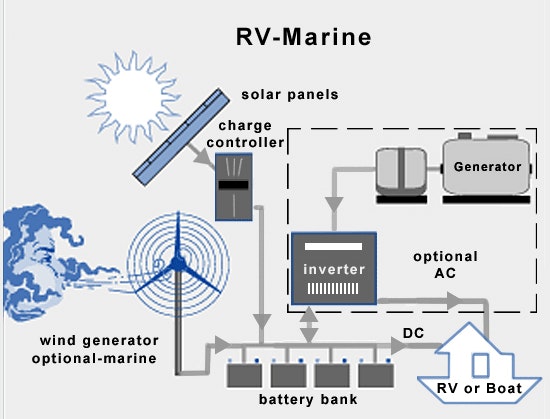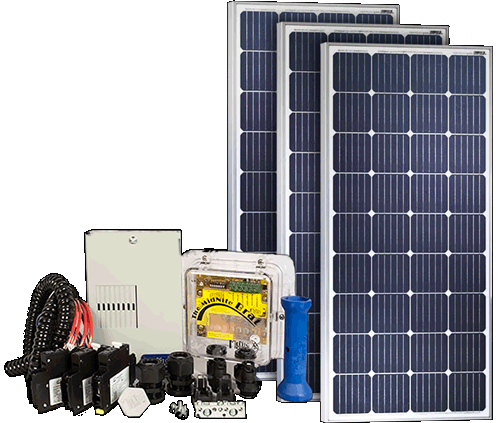Save Time and Money When You
Download Our FREE Battery Guide




RV & Marine Solar Power Systems use the same components as any off-grid power system: solar panels or wind generator, inverter, charge controller, and batteries.
The temperatures on the roof of an RV can be very hot especially when panels are “flush” mounted, actually a couple of inches off the roof. High temperature lowers voltage output of panels and power to your batteries.
A lot of people ask about durability of solar panels on the road or water with the twisting and flexing going on not to mention flying rocks and road debris. Solar panels are covered with tempered glass that is rated to take the impact of a 1″ hailstone at 50 m.p.h! And if you have ever tried to walk through a closed sliding glass door you know that tempered glass is pretty tough.
Being able to run household appliances on the road or on the high seas is a great convenience. An inverter made for that purpose will give you years of high quality, trouble-free power. Some people just use small “Big-Box Mart” inverters for their RV’s and it works out fine. When you get into inverters that charge batteries, however, things change.
If you ever plan to connect to “shore power” from your garage, the KOA or your marina you should only use an inverter / charger that is “mobile” rated by UL standards. These inverters provide automatic “ground switching” between the vehicle ground and the ground coming from the shore line.
inverter / charger that is “mobile” rated by UL standards. These inverters provide automatic “ground switching” between the vehicle ground and the ground coming from the shore line.
All AC systems should have a “bond” between the neutral and ground wire only one place in the system. That place is usually at the meter of the system like on your house. Mobile inverters have this bond built-in for when you are on the road. It provides a “path to ground” for errant AC power and is a safety connection. When you connect to the shore, that power already has a bond back by the KOA or marina power meter and you don’t want two “bonds”. “Mobile” rated inverters can sense this connection to the shore line and disconnect their internal bond and use the one from shore. When you unplug the inverter re-connects its own bond.
More Relevant topics & resources:

